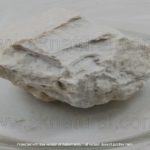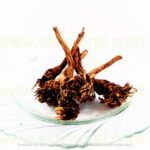Description
Sang e Jarahat at sknatural is Hydrated Magnesium Silicate. It is cold and dry in second order. Appearing in brownish-white or grey irregular pieces or thick masses, talc exhibits a smooth and unctuous texture, resembling soap. While partially insoluble in water and in ethanol (90%), it is tasteless, easily pulverizable, and yields a soft, slippery powder when ground. Its taste is soft and bland.
Talc serves various purposes in products, including absorbing moisture, preventing caking, improving consistency, and rendering a product opaque. You can commonly find it in personal care items like loose powders (such as talcum powder, baby powder, blush, and eyeshadow) as well as in other forms like pressed powder and liquid makeup.
Other names:
Chemical/Common Name: Magnesium Trisilicate, Soap Stone
Arabic Name(s): Hijrul ‘Arabi
Urdu Name(s): Sang-e-Jarahat, Sange-Jarahat Saida
English Name(s): Talc
Properties:
Non-systemic gastric antacid, acts by physical absorption of acid and chemical neutralization. It is mildly laxative, potent astringent, desiccant and styptic.
Medicinal uses:
When Sang e Jarahat reacts with hydrochloric acid in the stomach, it produces hydrated silicon dioxide, which serves as an absorbent in both the stomach and intestine. In the stomach, it absorbs HCl and pepsin, forming a gelatinous, adherent coating on the ulcer crater, thus protecting it from the digestive actions of enzymes and acid.
Internally, doctors administer it with milk cream or brown sugar to treat conditions such as dysentery, diarrhea, menorrhagia, and leucorrhoea. Additionally, when applied locally to syphilitic sores and ulcers, it can stem bleeding from the nose and wounds. Moreover, it possesses the ability to halt abnormal secretions from internal organs. Manufacturers commonly include it in tooth powders to strengthen the gums and teeth, thereby promoting dental health.







Reviews
There are no reviews yet.